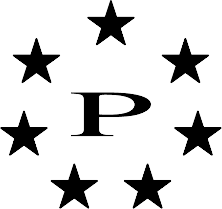Энергии связи легких гиперядер
Аннотация
Легкие гиперядра играют роль естественной лаборатории по изучению Y N и NN-взаимодействий. Отталкивающий характер ΛN-взаимодействия приводит к тому, что возможные связанные состояния в гиперядрах возникают благодаря трехчастичному нуклон-гиперон-нуклонному взаимодействию. Ведущая роль в этом взаимодействии отводится конверсии ΛN → ΣN одного вида гиперонов в другой. В данной работе энергии связи легчайших гиперядер получаются путем решения однородного интегрального уравнения Фаддеева для трех частиц как с реалистичными, так и с модельными YN- и NN потенциалами. Точно учитывается конверсия Λ- и Σ-гиперонов. Разработана технология численного решения однородного интегрального уравнения Фаддеева с тремя частицами различной массы для парных потенциалов в локальной форме. Приведена обобщенная на локальные потенциалы процедура приближенного решения интегральных уравнений методом Нойеса–Ковальского. Для ускорения численного счета введена и апробирована процедура четырехмерной сплайн интерполяции найденных двухчастичных T -матриц. Численные расчеты энергий связи проведены как с зарядово зависимыми сепарабельными потенциалами, так и с зарядово-зависимыми локальными потенциалами. Обсуждается влияние высших парциальных волн NN-потенциалов на энергию связи легких ядер. Полученные значения энергий
связи простейших ядер 3H, 3He, 3ΛH, 3ΛHe находятся в хорошем согласии с имеющимися экспериментальными значениями. Дополнительно проведены четырехчастичные расчеты с парциально-волновым разложением используемых парных потенциалов. Показано, что развиваемый подход также может быть успешно применен для поиска энергий связи четырехчастичных гиперядер 4ΛH, 4ΛHe.




